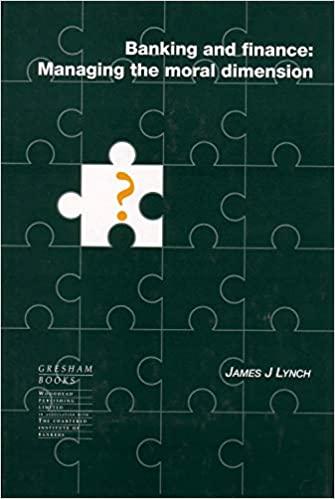Question
North America is often considered a blend of two countries with similar tastes and perceptions. And in many cases, this is true. However, in the
North America is often considered a blend of two countries with similar tastes and perceptions. And in many cases, this is true. However, in the case of car manufacturer Hyundai, there is much to be said about crossing the 49th parallel. Hyundai started in Canada first, opening up operations in 1983. By 1985, Hyundai was the number one car importer in Canada. Meanwhile, it took until 1986 for Hyundai to enter the United States, and it did so with a rather underwhelming effort called the Hyundai Excel. Car and Driver called its performance (f)aster than speeding molasses. Others described the 1986 model in different terms: a dog. Hyundai has continued to face this perception of lower quality or performance since the 1980s. In order to combat this view of its firm, Hyundai decided to focus on quality. But instead of simply choosing higher quality materials or telling the quality story, Hyundai decided to take the lead. It focused on building a reputation as having the industrys best warranty. This focus on warranty compelled employees of Hyundai to work hard to back up the warranty, engaging the company e in a new focus on quality However, not much has changed in the minds of the U.S. car shopper in 30+ years. In 2015, the Harvard Business Review noted that Hyundai still struggles to find a foothold in the United States market: Over the past decade, for instance, Hyundai has introduced longer warranties and luxury models such as the Genesis and Equus. These moves have boosted sales volume but have not budged Hyundais position as a peripheral follower, not that far from its sister brand, Kia, and secondtier Japanese brands such as Mazda. Around the same time, Hyundai was creating a new campaign in Canada, with a focus on the idea of modern premium. The idea of the campaign was to continue to move along the evolution of Hyundai name in Canada. For years, Hyundai had focused on a practical and attribute based focus, but wanted to appeal to the emotional, if not visceral, response consumers can get from driving a car. This new position was part of a global refocus for Hyundai, in hopes of ridding itself of the secondtier perception. In late 2016, Hyundai announced the introduction of the Genesis line of products for the Canadian market. Meant to compete with higher end vehicles like BMW and Audi, the Genesis was geared to continue the emotionbased push for the hearts (if not the minds) of the higher end car buyer. Many competing highend car producers have something that Hyundai does not a history. Many manufacturers like Mercedes Benz can look back at a lineage of cars, designs, and engineering and use a legacy position in the market. Hyundai has had to face its practical, molassesbased perceptions of earlier introductions like the boxy Excel. To introduce the Genesis, Hyundai decided to not approach the traditional distribution system of car dealerships. It created the Genesis at Home program, where interested consumers would be picked up from home to test drive the Genesis. Hyundai also ensured that pricing for the Genesis would be straightforward: all taxes and other charges would be part of the sticker price. However, this price could be adjusted depending on the consumers choice of custom features certain car features can be adjusted before purchase, creating a unique offering for the customer. Hyundais challenge with Genesis is not much different than for its overall introduction to the Canadian market in the 1980s. It has yet to shed its image as functional rather than fun. New entrants to the luxury market like Tesla are not hamstrung by a history or less than an Excellent past. Tesla can claim the technology and proenvironment niche in the market without consumers thinking of other perceptions of the brand. And its the Hyundai name that could be the downfall for the Genesis brand. Genesis cars have been sold alongside other Hyundais for the last eight years. Being associated with Hyundai, especially given its generic and functional image in the market, could create a real challenge for success in the luxury car market.
And you drive onto the scene right about here. You are a burgeoning marketing expert, and your understanding of targeting and positioning are about to be tested. You need to develop a way to reposition Hyundai in the minds of consumers in order for the Genesis brand to be successful. You will first need to assess the luxury car market in Canada, and from there choose a realistic target market on which to focus. The resulting new position will have to make sense for Hyundai and help to change perceptions in the market. You are faced with an uphill battle on this one. Release the parking brake and start your repositioning of Hyundais Genesis brand.
Step by Step Solution
There are 3 Steps involved in it
Step: 1

Get Instant Access to Expert-Tailored Solutions
See step-by-step solutions with expert insights and AI powered tools for academic success
Step: 2

Step: 3

Ace Your Homework with AI
Get the answers you need in no time with our AI-driven, step-by-step assistance
Get Started


